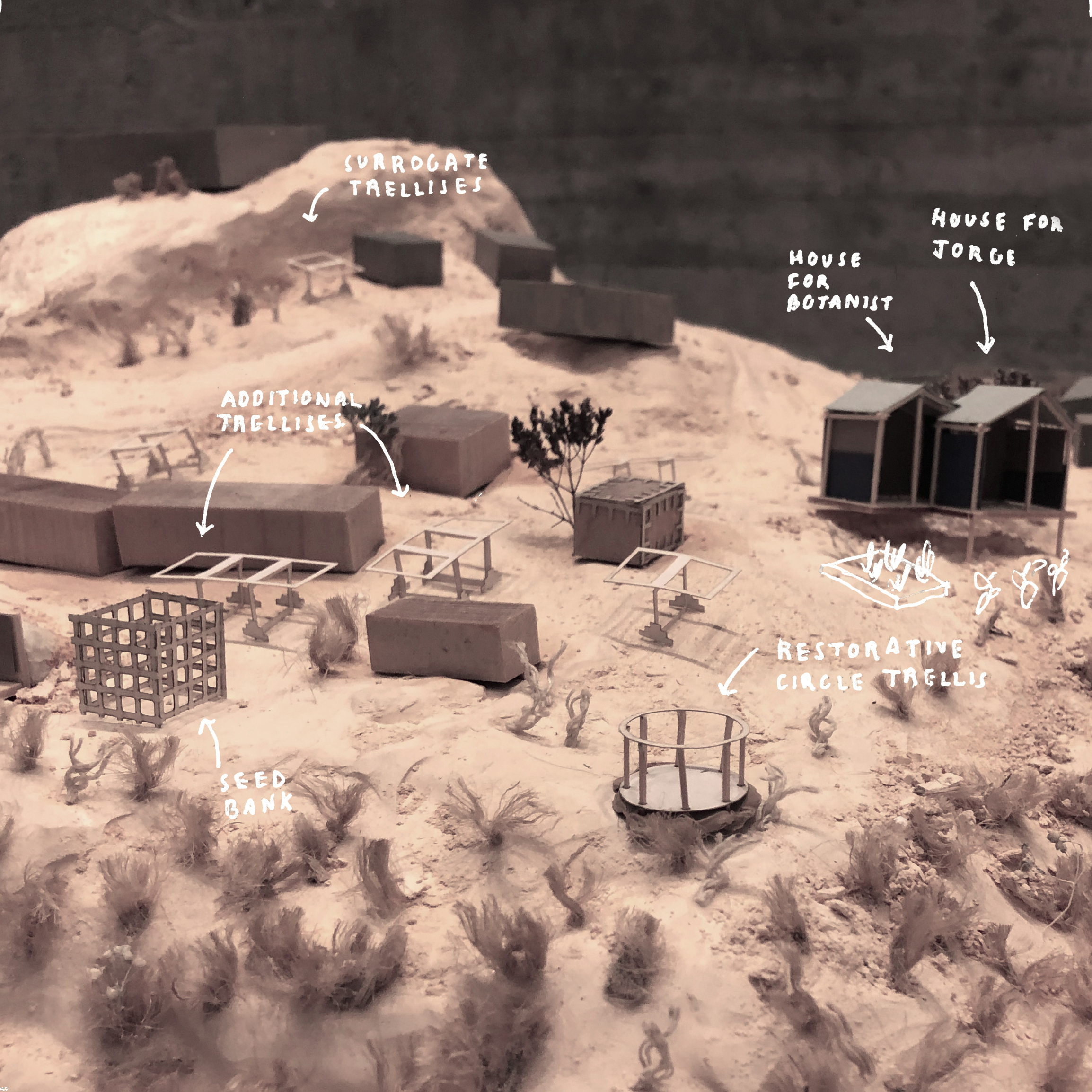Growing Together
with Rhea SchmidBrushing against the edge of the US-Mexico Border, Los Laureles Canyon in Tijuana consists of a string of communities that must confront global environmental issues at an acutely local scale. The tributaries in the canyon drain into the Tijuana Estuary in San Diego, taking trash and eroded sediment across the border with annual flood surges. Communities in the canyon live in precarious housing conditions and must travel long distances to reach their places of work or education. In some neighborhoods, water is contaminated by nearby maquiladoras.
This project examines the participation of border manufacturing sites in the production of such circumstances. These fairweather factories exploit cheap labour and lax regulation to produce global consumer products at the expense of local communities and ecologies. Using the ethnobotanic principles of the indigenous Kumeyaay community, we address the last vacant swathe of land in the canyon, Rancho Macias, through a program of productive conservation.
This project examines the participation of border manufacturing sites in the production of such circumstances. These fairweather factories exploit cheap labour and lax regulation to produce global consumer products at the expense of local communities and ecologies. Using the ethnobotanic principles of the indigenous Kumeyaay community, we address the last vacant swathe of land in the canyon, Rancho Macias, through a program of productive conservation.
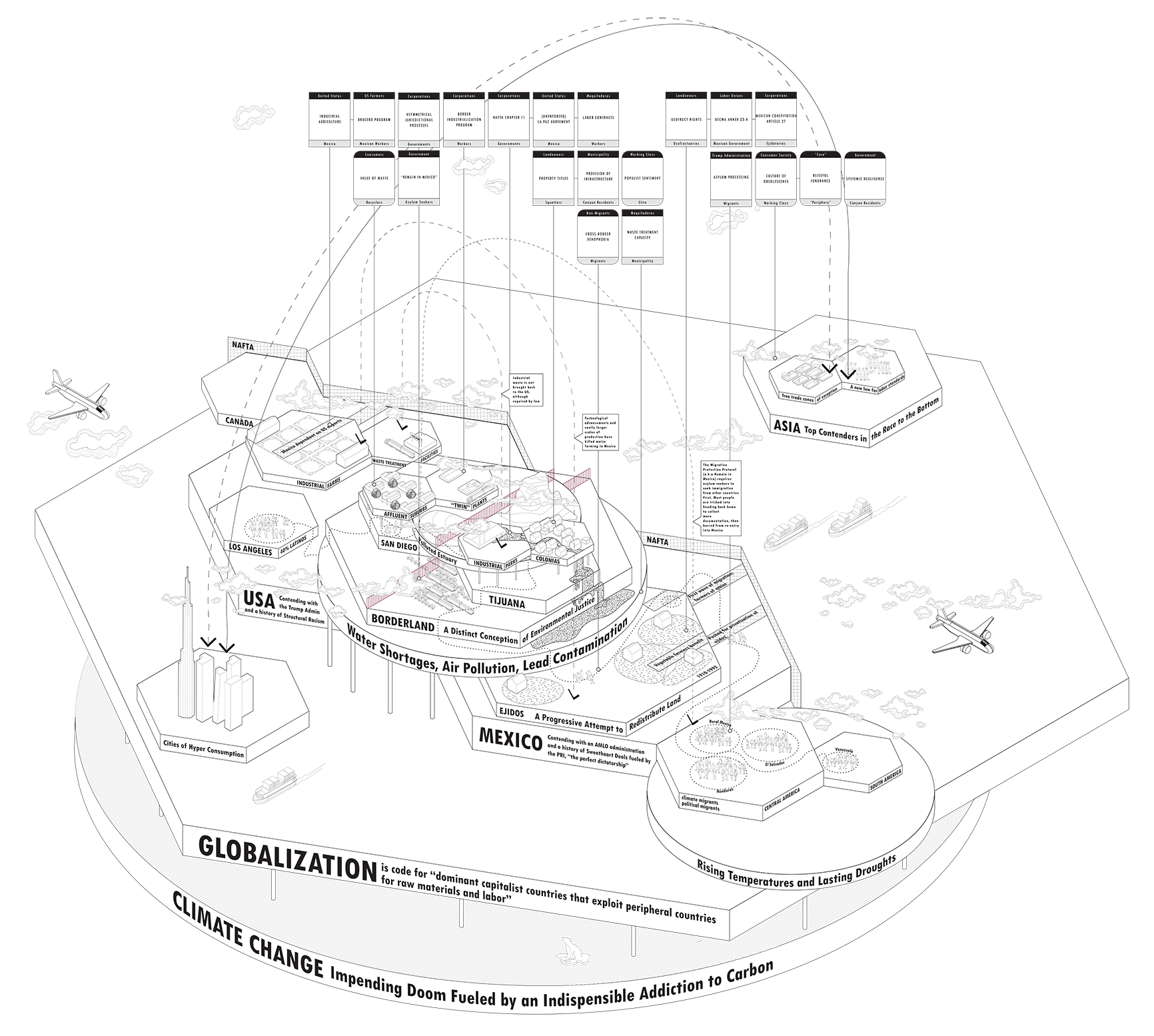



These conflict diagrams illustrate the environmental and cultural conditions at play in the Los Laureles Canyon
![]() Maquiladoras create vicious economic cycles to feed insatiable consumer appetites, while our project leverages the capacities of the factories to propose a virtuous cycle of production and consumption that addresses local needs.
Maquiladoras create vicious economic cycles to feed insatiable consumer appetites, while our project leverages the capacities of the factories to propose a virtuous cycle of production and consumption that addresses local needs.
![]() While the Rancho Macias remains empty, its edge is populated by a range of actors, each with their own microeconomic logics
While the Rancho Macias remains empty, its edge is populated by a range of actors, each with their own microeconomic logics
![The concept of plant-human interaction, adopted from the ethnobotanic traditions of the Kumeyaay tribe, can be found in every aspect of the project, from the scale of the site to the scale of a single ecobrick or agave-plastic basket]() The concept of plant-human interaction can be found in every aspect of the project, from the scale of the site to the scale of a single ecobrick
The concept of plant-human interaction can be found in every aspect of the project, from the scale of the site to the scale of a single ecobrick
![]()
 Maquiladoras create vicious economic cycles to feed insatiable consumer appetites, while our project leverages the capacities of the factories to propose a virtuous cycle of production and consumption that addresses local needs.
Maquiladoras create vicious economic cycles to feed insatiable consumer appetites, while our project leverages the capacities of the factories to propose a virtuous cycle of production and consumption that addresses local needs. While the Rancho Macias remains empty, its edge is populated by a range of actors, each with their own microeconomic logics
While the Rancho Macias remains empty, its edge is populated by a range of actors, each with their own microeconomic logics
Drawing from the model of the traditional ejido, shared agricultural territory in which usufruct rights allow indefinite use of land on the condition that it is not destroyed, our model of productive conservation for Rancho Macias seeks to make sustainable use of native plants that can be grown on the site. Indigenous knowledge of plants as sources of medicine, food, construction material, and handicrafts is central to the project, which embraces the notion of plant-human interaction at every scale.
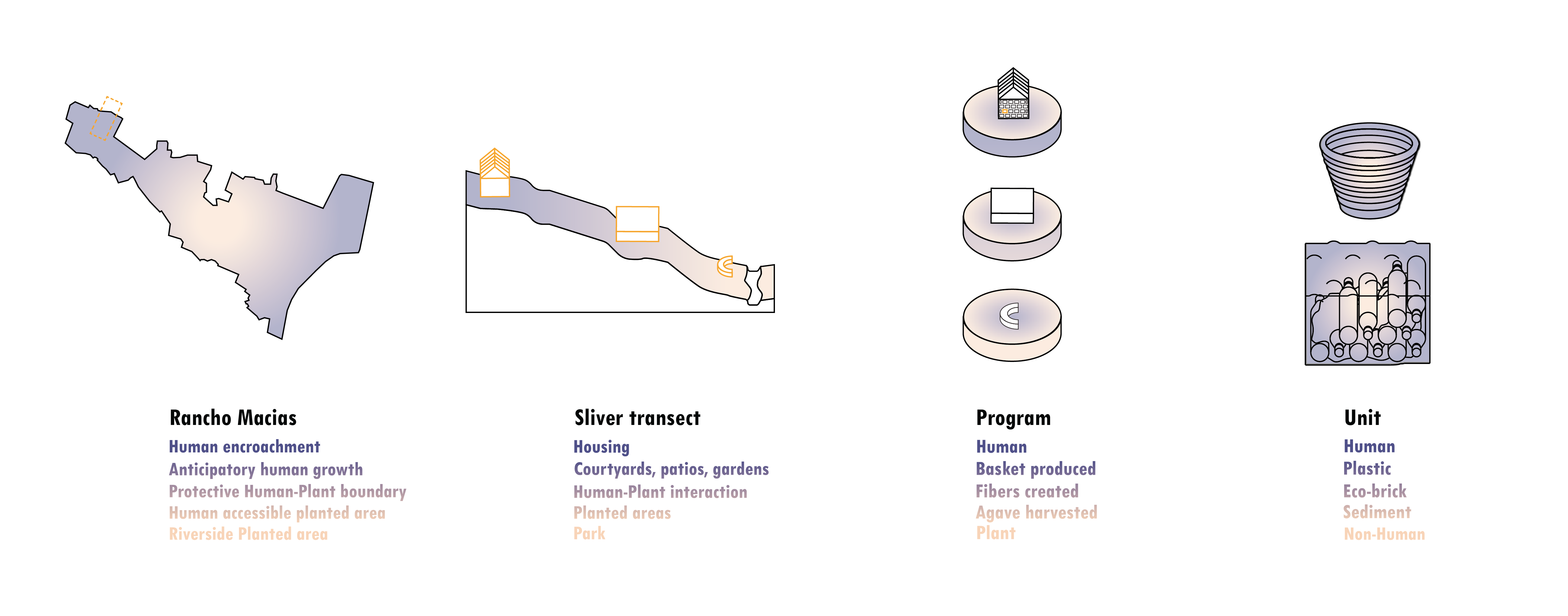 The concept of plant-human interaction can be found in every aspect of the project, from the scale of the site to the scale of a single ecobrick
The concept of plant-human interaction can be found in every aspect of the project, from the scale of the site to the scale of a single ecobrick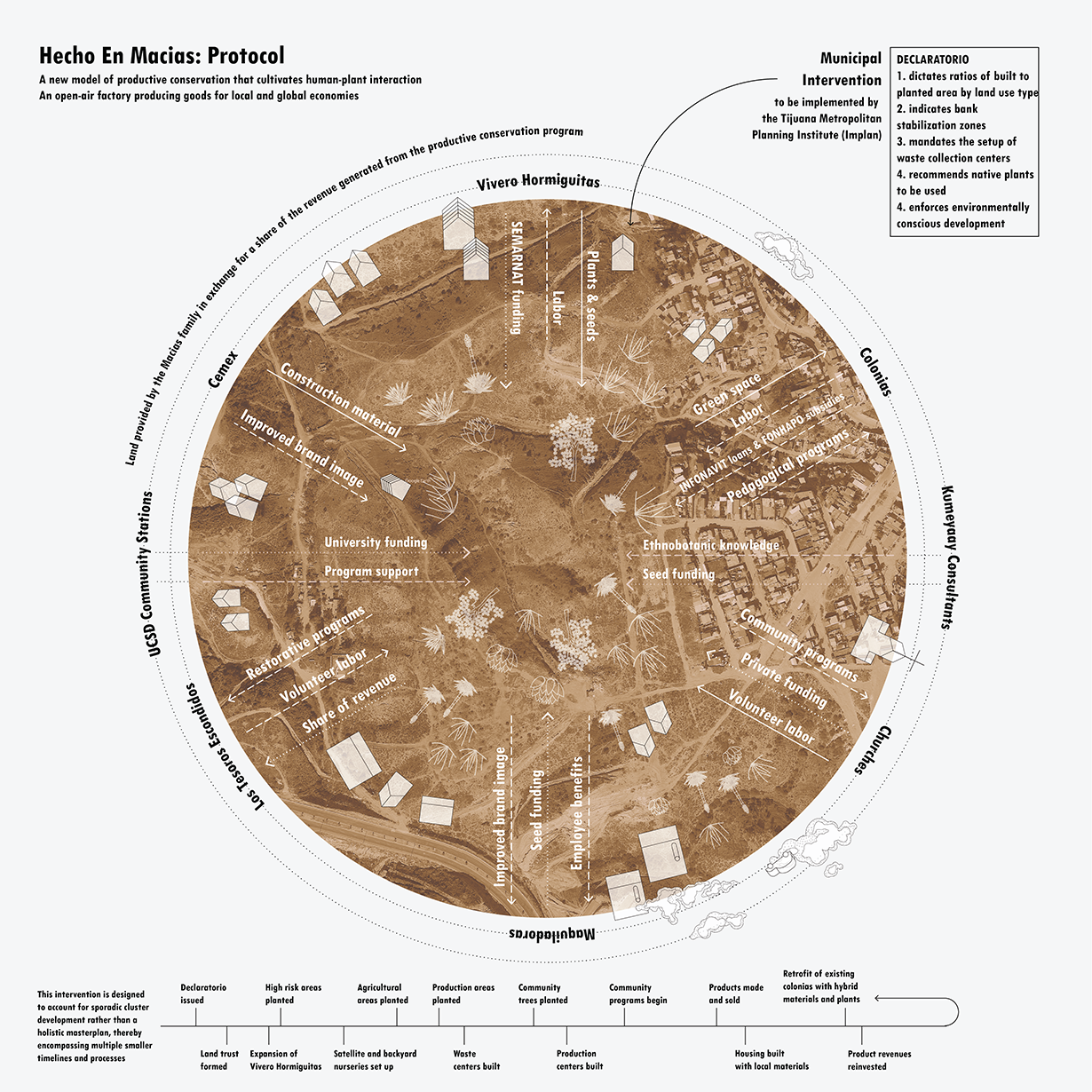
Our intervention is preceded by a protocol in which entities on the border of Rancho Macias engage in a quid pro quo exchange of assets in order to sustain the program. This exchange between the entities on the edge creates a community of stakeholders invested in the future of Rancho Macias. The conservation of the site, beginning with anti-erosion buffer zones around tributaries, would be implemented through a planning declaration that can be read here. This document stipulates ratios of built-to-planted area for future incremental development, and specifies an agricultural zone in which jojoba and chia will be grown as cash crops to help fund the program.
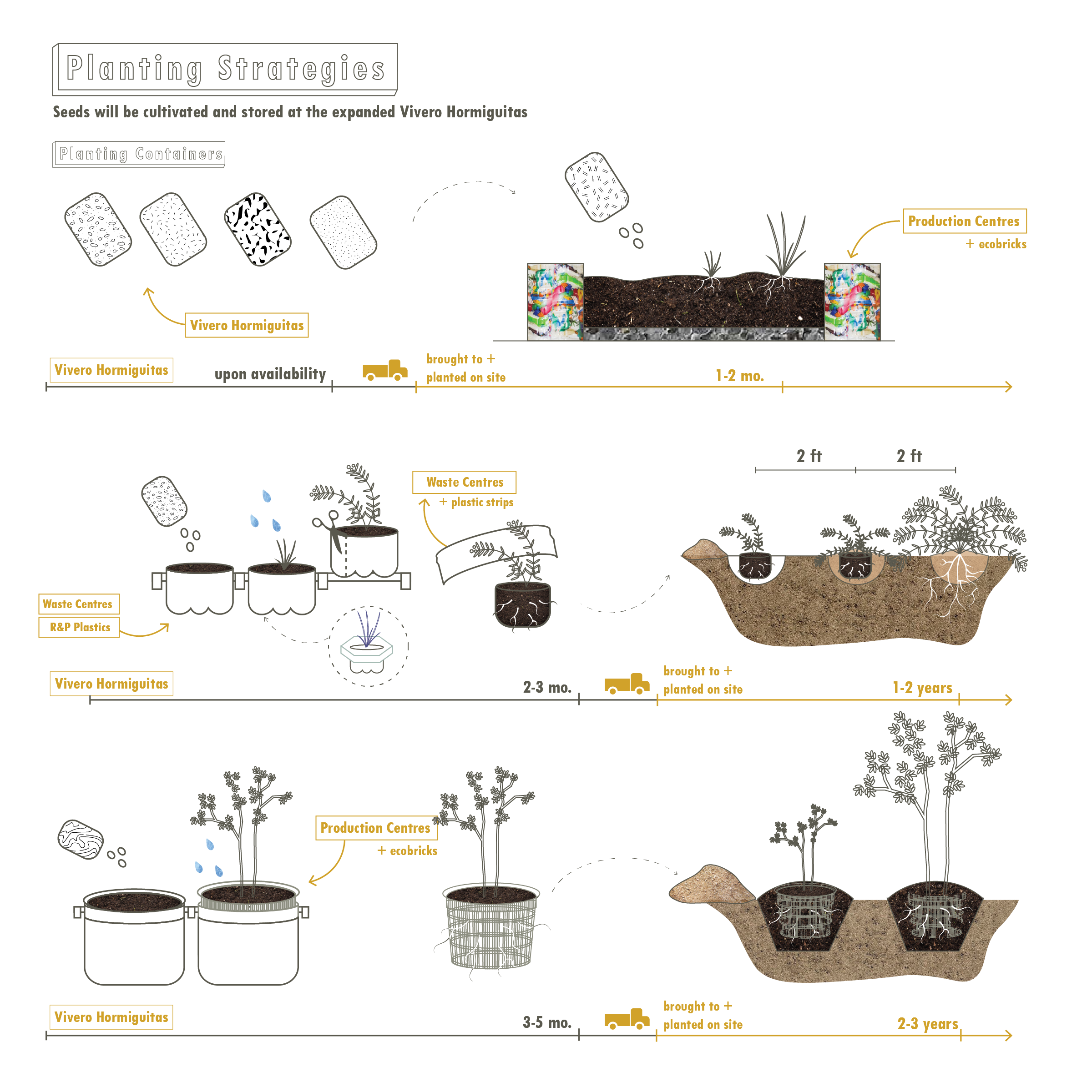



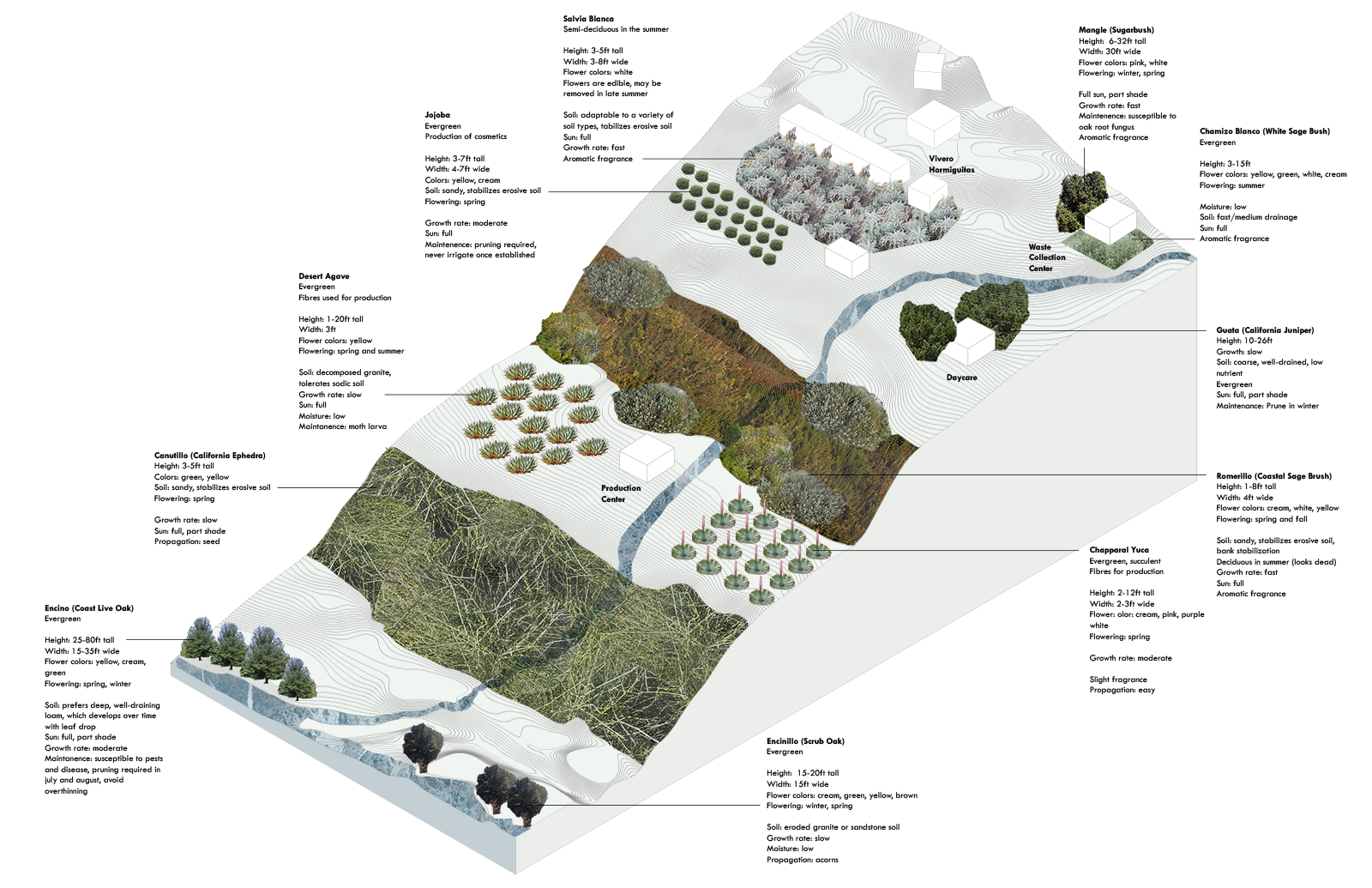 Planting strategies deployed on a transect of Rancho Macias
Planting strategies deployed on a transect of Rancho Macias
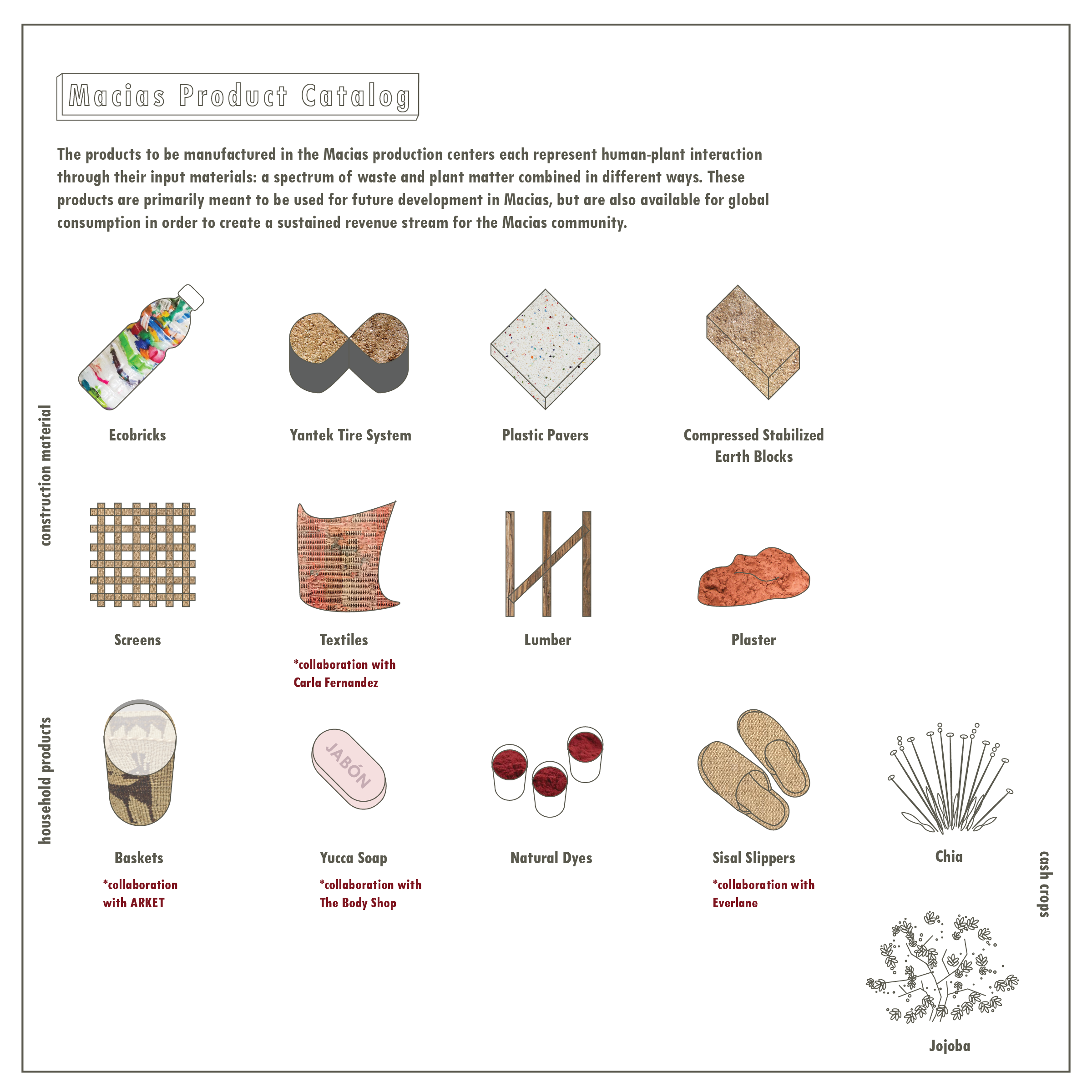





Plants will be grown to harvest material for the products that will be created in Rancho Macias, which would be both used on site and also sold to global audiences through specific partnerships. Every product combines the manmade and the natural to result in a hybrid, from the plant fibres and plastic strips in a textile to the sediment and plastic waste in an ecobrick. Waste collection centers on the periphery of Rancho Macias, built on formerly illegal dump sites, will supply sorted waste for use in production centers.
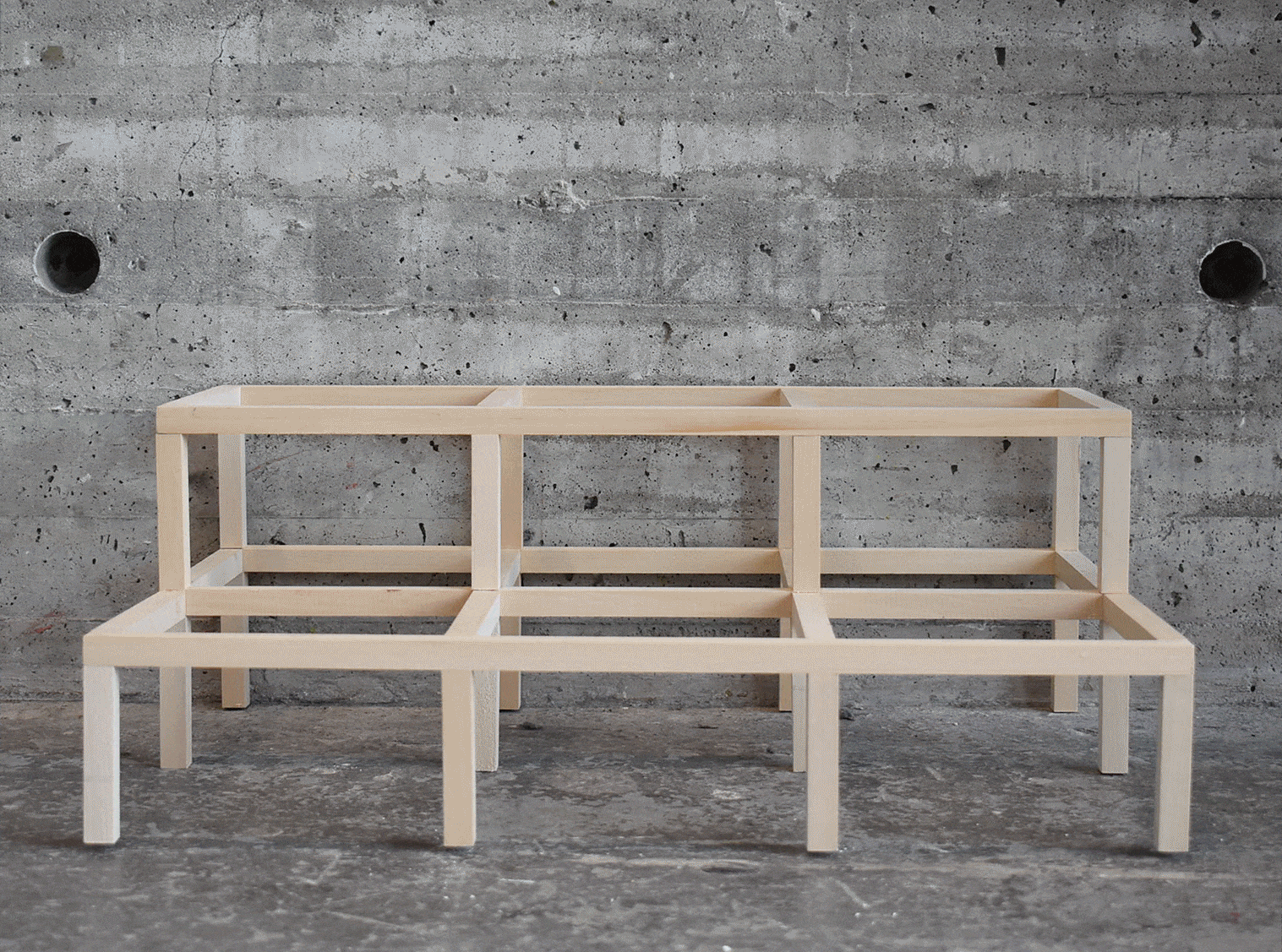
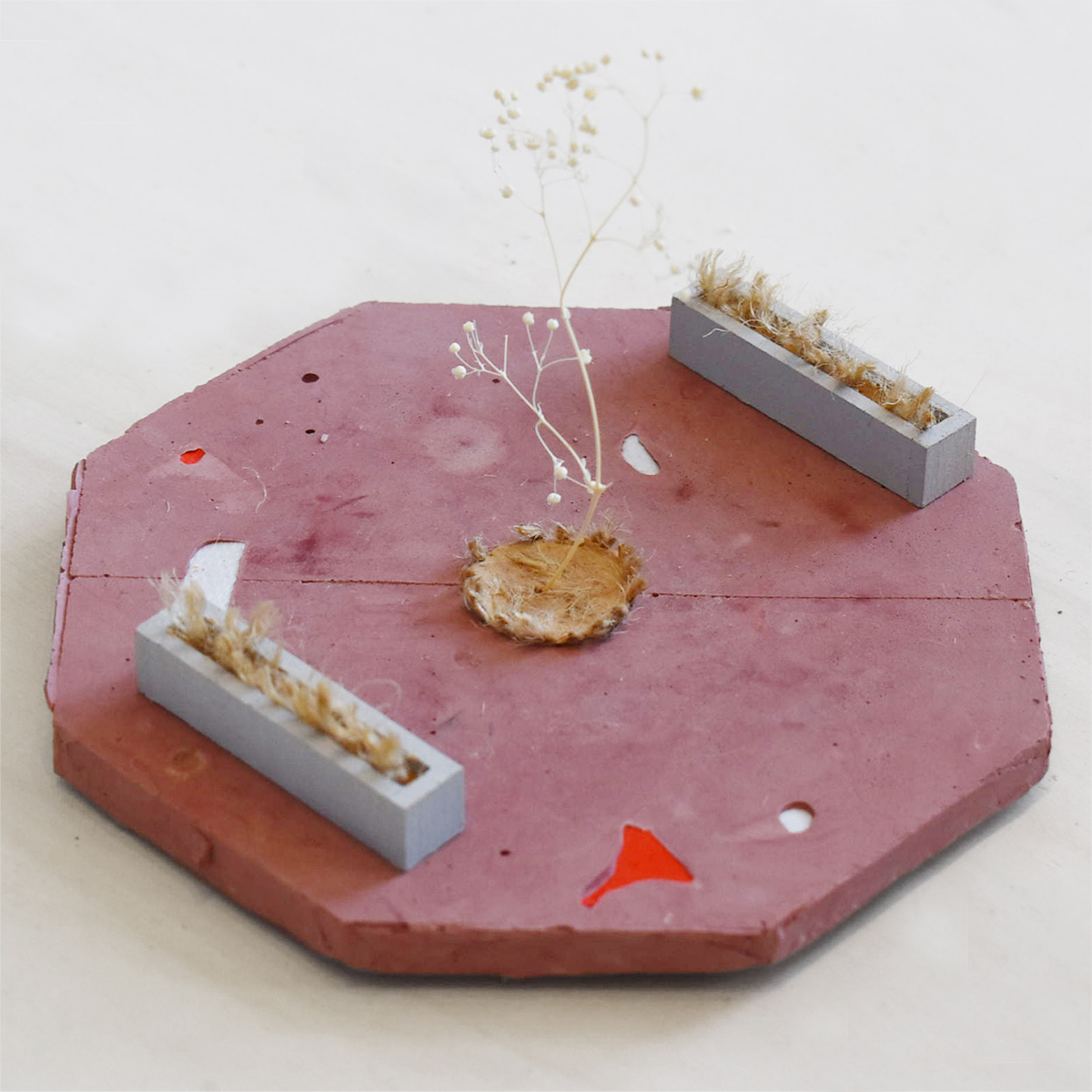





The building sequence for every program in Rancho Macias begins with the plant. This is followed by simple arrangements to allow for being with the plant, followed by light trellis structures that provide minimal shelter. These are followed by structural elements such as ecobrick retaining walls and post-and-beam frames that host textiles and screens produced on site. Structures are completed with light metal roofs to enclose the shelter.








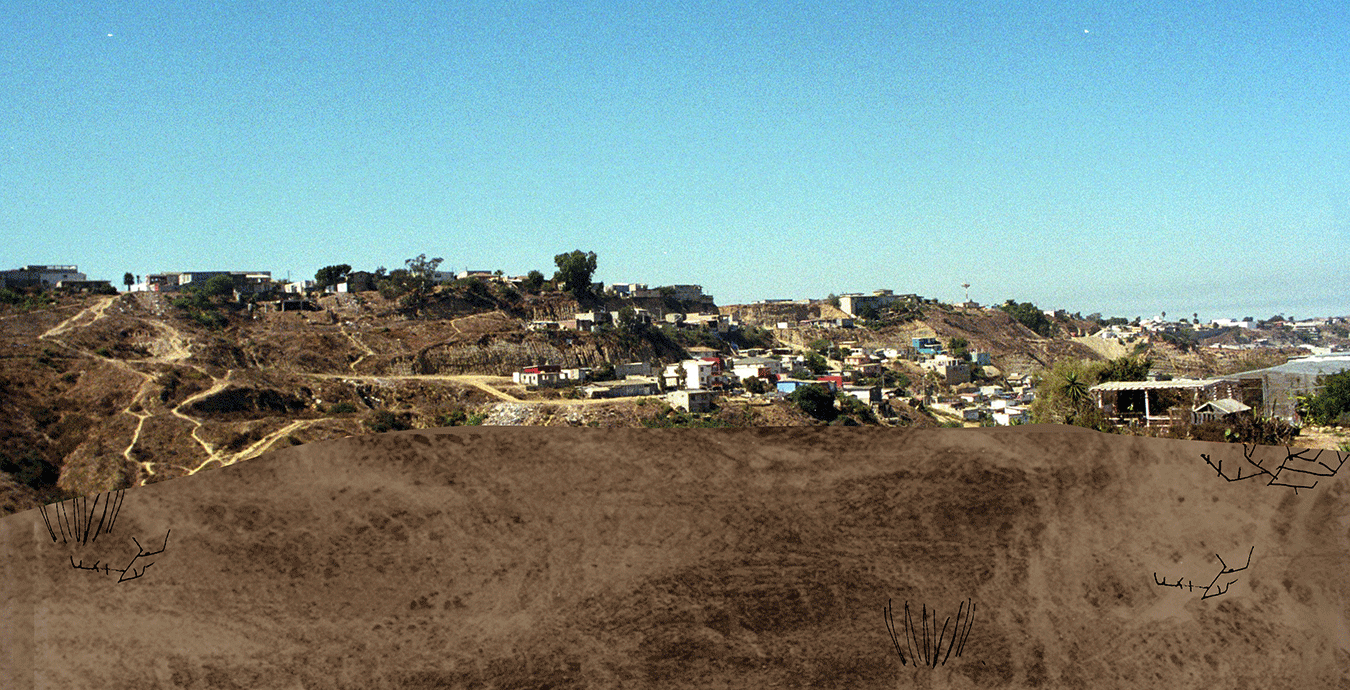
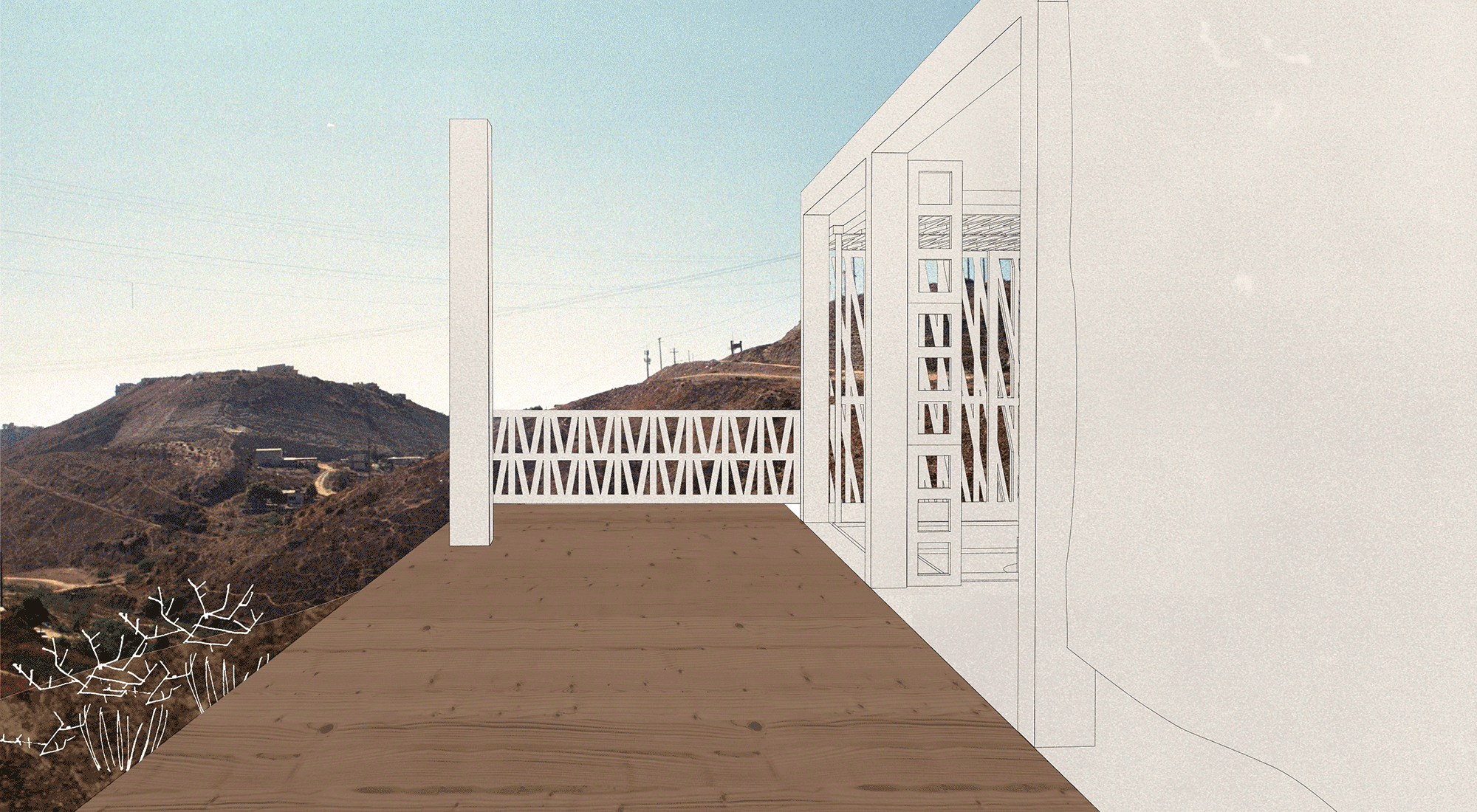

Different configurations of the kit of parts and planting strategies result in production centers, daycares, youth clubs, nurseries, waste collection points, and public platforms that explain the potential of anti-erosive native plants. These programs, which together create a circular economy, might incrementally spread to the rest of Rancho Macias.





